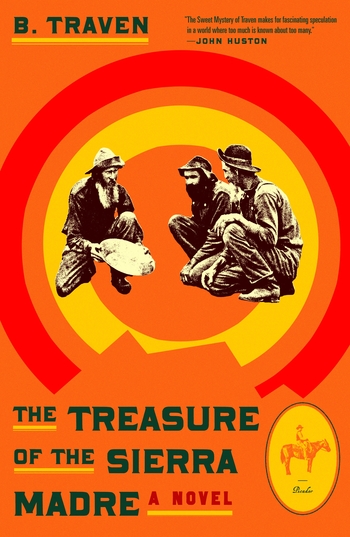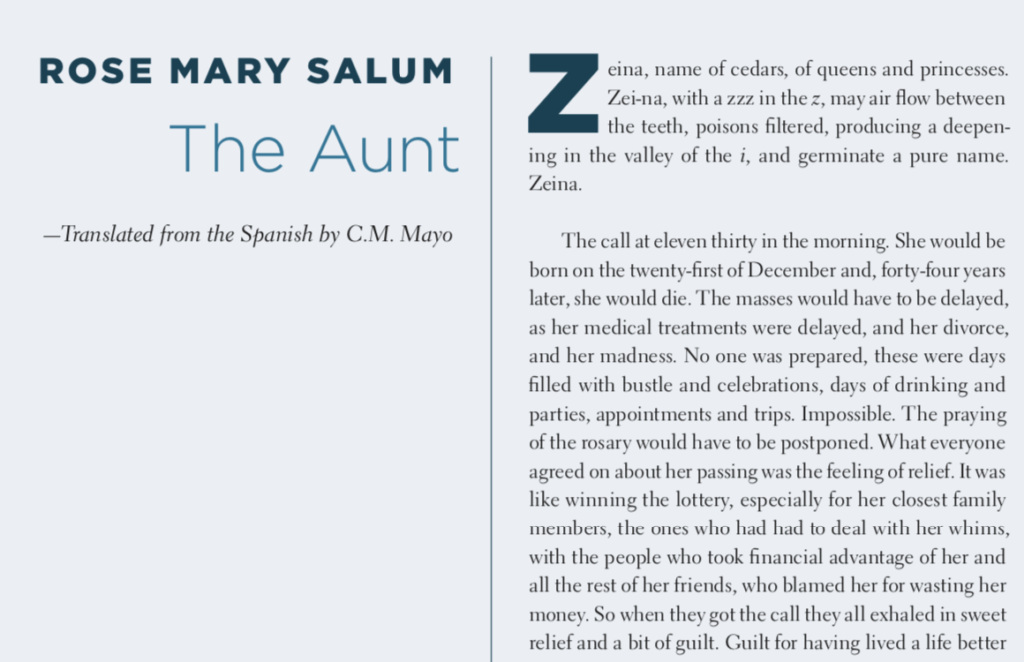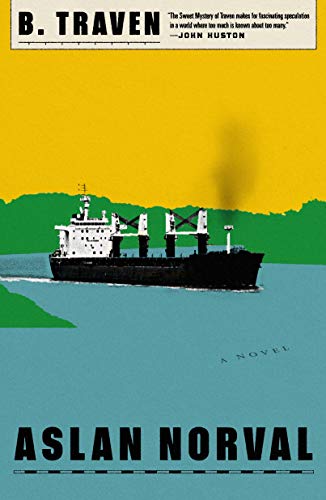
When asked if I publish guest blogs, in recent years my answer has invariably been, “not any more.” But why have your own blog if you can’t make an exception? (Or two!) And an exceptional exception this Monday’s post is. Dear writerly reader, it is a tremendous honor for me to share Timothy Heyman’s essay “Traven’s Triumph” with you, for it imparts watershed news about one of the most important writers of the twentieth century– one who happened to have been Mexican, and originally– the long-standing mystery solved– German, the illegitimate son of an immensely wealthy Jewish industrialist, and the half-brother of the Weimar government’s Minister of Foreign Affairs.
There are a multitude of theories about B. Traven’s true identity, however, consider this source: Timothy Heyman, together with his wife, B. Traven’s stepdaughter, Malú Montes de Oca de Heyman, administers B. Traven’s literary estate.
Most people today will have heard of B. Traven because of his novel The Treasure of the Sierra Madre, which was made into John Huston’s classic movie starring Humphrey Bogart. But Traven was the author of multiple best-selling novels, many still cult-classics and in-print in multiple languages. Find out more at the official B. Traven website, www.btraven.com.
TRAVEN’S TRIUMPH
by
Timothy Heyman
This essay was originally published in Spanish in Letras Libres
B. Traven
Of German origin and naturalized Mexican, B. Traven was one of the great writers of the twentieth century. He has been called the German “George Orwell” for his combination of the novelist’s art and moral, social and political engagement. He wrote fifteen novels and innumerable stories and has sold more than thirty million copies, so far five hundred editions in more than thirty languages. No less popular have been film and television adaptations of his work. Some are already classics such as The Treasure of the Sierra Madre (1948) which won 3 Oscars, Macario (1960), which was the first Mexican film to be nominated for the best foreign film Oscar, and Das Totenschiff (1959), a cult classic in Germany. Other films such as La Rosa Blanca, Días de otoño and Canasta de cuentos mexicanos are considered outstanding examples of the first golden age of Mexican cinema in the 1950s-60s.
Traven used many pseudonyms, using the argument that “the creative person should have no other biography than his works.” The year 2019 includes two Traven anniversaries: on March 26, 2019, it was fifty years since his death and, on May 1, one hundred years since he escaped a death sentence in Munich for having participated in 1919 in the government of the Bavarian Council Republic (Bayerische Räterepublik). My wife Malú, Traven’s stepdaughter, and I are using the opportunity of this double anniversary to reveal his parentage, with the desire that current and future generations focus more on his books than his family. This revelation could also contribute to a deeper understanding of his sources of inspiration and a greater appreciation for his work.
The Son of Emil Rathenau
On December 13, 1990, Gabriel Figueroa, one of the most important Mexican cinematographers of the 20th century, revealed for the first time to Ange-Dominique Bouzet, a journalist of the French newspaper Libération, that the real name of Traven was Moritz Rathenau, the illegitimate son of Emil Rathenau.
This version was also recorded in Figueroa’s Memoirs, which were published in 2005, eight years after his death. After his interview with Libération, Figueroa tried first to call Rosa Elena (Chelena) Luján, widow of Traven and mother of my wife Malú, to inform her of his revelation, but he was unable to reach her. Later he met with Malú and me at a Christmas party in Mexico City, and he told us about his revelation to Liberation. In his Memoirs, Figueroa recalls a comment from me that my father’s stepfather (Robert Pohl) had worked for AEG, the German electricity company founded by Emil Rathenau. Gabriel also writes that the day after the party he visited Malú in our apartment. Malú remembers the visit well.
Despite its importance, the Traven-Rathenau connection has not been picked up by the many people who have analyzed his life and work, called “Travenologists.” Both Karl S. Guthke, Harvard professor and author of the best and most complete biography of Traven (B. Traven: The Life Behind the Legends) and the scholar Jasmina Jäckel de Aldana ventilated the possibility in the 1990s, but neither of them took it further.
This lack of interest can be explained in several ways. Travenologists have attributed various fathers to Traven, from Kaiser Wilhelm II to a North German brickmaker called Feige. A skeptic might believe that the connection with Rathenau was just another smokescreen from Traven, who used more than 10 pseudonyms, with several different identity documents. In relation to the whole parentage issue, it has not helped that one of the prominent people who thought that Traven was son of the Kaiser was Gerd Heidemann, famous for discovering the fake Hitler diaries.
Meanwhile, many non-Mexican Travenologists are unaware of the Mexican environment, or the relationship that Traven maintained with Figueroa and Esperanza López Mateos, Figueroa’s cousin, translator and literary agent of Traven between 1941 and 1951 and sister of Adolfo López Mateos, subsequently President of Mexico (1958-1964). Malú knew Figueroa very well, to the extent that she considered him a member of the family: she was still a child when in 1951 Esperanza died at the relatively young age of 44 years. Many Mexican Travenologists do not know Germany and prefer to focus on Traven’s life in Mexico.
After the death of Traven in 1969, Chelena confirmed that her Mexican husband was the same person as the writer, actor and journalist Ret Marut in Germany, because Traven had authorized it. For many Travenologists, that statement was sufficient. However, also following the instructions of Traven, Chelena took the ultimate secret, Marut / Traven’s parentage, with her to the grave (she died in 2009).
Malú and I do not know anyone who has taken the trouble to follow up Figueroa’s revelation in the nineties. In our investigation, we have reviewed the biographies, documents and personal effects that are part of the the “B. Traven Estate” in our Mexico City home. Our research includes publicly available information on the Rathenau family in books and articles and a visit to the New York headquarters of the Leo Baeck Institute, the center dedicated to the investigation of the history of German-speaking Jews.
Traven and Emil Rathenau
For various reasons, we are convinced that Figueroa’s version is correct. It is very unlikely that Figueroa, who did not speak German and did not know the country well, would have heard of Emil Rathenau and his importance in Germany, or of AEG––with the almost correct spelling of the company (Allgemeine Elektricitäts-Gesellschaft)––if it were not through Esperanza López Mateos, who revealed to him the information about Traven. Esperanza, in a letter to her family, referred to Traven as “Mauricio.” She was also illegitimate, and this was possibly the basis of her close friendship with Traven, as evidenced by their copious correspondence in our archive. Until he hired Chelena Luján as her translator in 1953 and married her in 1957, Traven ́s closest friends in Mexico were Esperanza López Mateos and Gabriel Figueroa.
The life of Emil Rathenau (1838-1915) provides other clues. His father’s name was Moses Rathenau, but he later changed it to Moritz, the German translation of the Hebrew Moshe. In honor of his father, Emil’s full name was Emil Moritz Rathenau. He called neither of his two legitimate sons Moritz after him: the first, born in 1867, was called Walther and the other, born in 1871, Erich. In 1883 he had a daughter, whom he named Edith. It is possible that, due to its obvious “Jewishness” Emil chose not to call any of his legitimate children “Moritz.”
Until 1878, Emil Rathenau, engineer and entrepreneur, had tried many businesses. But none really paid off until in 1881 he attended the International Electricity Exhibition in Paris and it occurred to him to acquire the rights to Edison’s patents. In 1883 he founded the Deutsche Edison Gesellschaft and four years later he converted it into AEG. In 1903, with the support of Kaiser Wilhelm II, Rathenau through AEG formed together with Siemens & Halske (owned by his rival Werner von Siemens) a wireless communication subsidiary, Telefunken Gesellschaft für drahtlose Telegraphie (Telefunken). He went on to become one of the richest and most successful entrepreneurs in Wilhelmine Germany.
The birth of Traven, possibly in 1882 (one of the birthdates produced by the author himself in at least two identity documents) would have coincided with the creation of the Deutsche Edison. Probably, Emil had gained even more confidence as an assimilated Jew and changed his mind when an illegitimate child (i.e., Traven) appeared. That’s why he chose to call him Moritz.
Walther Rathenau’s letters to his mother imply that, in 1883, a year after the birth of Traven, she was not happy in her relationship with Emil. Like many others of his social and economic status, Emil liked the theater, its surroundings and its women. Figueroa said that Traven’s mother was an Irish actress, Helen Mareck, which would explain his mastery of English at an early age, as well as his affinity for the theater.
Traven and Walther Rathenau
One of the reasons why Traven hid his parentage was that he knew it. He knew who his relatives were and lived with one or both for a period. Walther, Traven’s half-brother, studied physics, chemistry, and philosophy and became an engineer like his father. When Emil Rathenau died in 1915, Walther succeeded him as president of AEG. In World War I he was commissioned to set up a Department of Raw Materials for the German government, and after WWI in 1921 he became Minister of Reconstruction and in 1922 Minister of Foreign Affairs of Germany, the most important political post ever held by a German Jew. He was assassinated on June 24, 1922 by an anti-Semitic extreme rightist group.
The success of his half-brother could have motivated Traven, at a young age, but in activities very different from Walther’s, specifically in theater and anarchist activism. In Mexico, Traven called himself “engineer” Traven Torsvan, like his father and half-brother. In several of his books, the hero is an engineer. Traven’s first unpublished novel, written in 1914, which we have in our archives under the title of Die Fackel des Fürsten, was written (under the pseudonym Ret Marut), its hero was an engineer and it was about a major engineering project in Vietnam. His last novel, published in German in 1960, was entitled Aslan Norval, and its heroine champions a major engineering project in the US.
After starting his career as an actor and theater director, Traven (under the pseudonym Ret Marut) became interested in politics at the beginning of the twentieth century, at the same time as his half-brother. Walther was considered a renaissance man of his time, for his interest in philosophy and the arts, and his literary activities. He embraced capitalism, but tried to sweeten it, in a Bismarckian way, with the social safety net and philanthropy. Traven / Marut went in another direction, towards a version of Max Stirner’s idealistic anarchism, or a more extreme form of “universalism”, to summarize a paragraph of Isaac Deutscher in his essay “The Non-Jewish Jew” (1968):
“They were a priori exceptional in that as Jews they dwelt on the borderlines of various civilizations, religions, margins or in the nooks and crannies of their respective nations. Each of them was in society and yet not in it, of it and yet not of it. It was this that enabled them to rise in thought above their societies, above their nations, above their times and generations, and to strike out mentally into wide new horizons and far into the future.”
Walther Rathenau published stories under the pseudonym W. Hartenau. He also wrote about the situation of “non-Jewish Jews” in Germany and the issue of assimilation. He was a friend of Maximilian Harden, a non-Jewish Jew who changed his name from Felix Ernest Witkowski. Harden began his career as a member of an acting company and founded a magazine, Die Zukunft, for which Walther contributed some articles. An interesting model for Traven, who used a pseudonym, Ret Marut, was also an actor and founded in 1917 in Munich an anarchist magazine, Der Ziegelbrenner. In this publication, Traven describes in detail how, having participated in the Räterepublik of Bavaria, he escaped the death sentence on May 1, 1919. After that escape he continued to live underground, mainly in Germany, until 1923 and the following year he arrived in Mexico.
Traven appears for the first time in 1907, as an actor under the name of Ret Marut. There are several reasons why he chose a pseudonym. The main one is that he knew he was an illegitimate child, and had a dual identity, a Jewish father and a non-Jewish mother: a book on the Räterepublik of 1919 published in Munich in 1968, which is part of our Traven archive, says that Ret Marut self-identified himself as “Aryan-Jew.” Jews were increasingly assimilated, but they were tired of being identified as such, especially as anti-Semitism persisted.
At that time, it was common for people in theater and politics to use alternative names: Lenin, Stalin and Trotsky were pseudonyms. Furthermore, actors and writers were accustomed to playing with their identity or creating different names, and there is no doubt that for an anarchist like Traven any system, with names, passports and identities, was anathema.
A final consideration is that, as an anarchist, Traven did not want it to be known that he was related to a rich family, as it would have undermined his credibility (although he did insinuate in Der Ziegelbrenner that he had private means). Similarly, Emil Rathenau probably preferred to keep the relationship secret, both for familial and political reasons.
Traven and Ret Marut
Ret Marut was the main pseudonym Traven used during his German period, and it is similar to another name he used, Richard Maurhut. It is not difficult to see both names as anagrams of Moritz Rathenau. Marut has several etymological ramifications. It means “storm” in Sanskrit. When Traven founded a publishing company in Mexico with Esperanza López Mateos in 1943, he had no hesitation in calling it Ediciones Tempestad (“storm” in Spanish). The storm was a reality in Traven’s life and a frequent metaphor in his books. He even uses it in an unpublished letter to Malú when she was a girl. Traum is an anagram of Marut, and easily becomes Traven in Indo-European philology.
The change of Ret Marut (Moritz Rathenau) to B. Traven has a curious symmetry. In the first half of his life his last name Marut came from his first name Moritz and in the second half he used it as an anagram of his original surname, “Rathenau” becoming “Traven,” u becoming v, and a and h removed. The presence in his name of the letter “B.” reflects the second part of his life, an explanation he gave personally to Malú: he tirelessly corrected fictitious first names assigned to him beginning with the letter B. (such as “Bruno”). When Traven produced a document that he was born in San Francisco in 1882, he invented a name for his American mother: Helene Ottarrent. The first name is practically the same as that of his mother, Helen, and Ottarrent is another anagram of Rathenau (with O instead of u, adding 2 ts, and 1r, and removing the h). Malú mentions that, at the time when she and her sister Rosa Elena were growing up with him, Traven frequently enjoyed playing word games with them.
The Traven estate contains a selection of the things that his friends sent him from Germany. There is a booklet about Harden, his half-brother’s friend, and a technical book about the telephone published in the United States in 1904, a year after Emil Rathenau formed Telefunken with Siemens. There is a piece of paper where Traven practices different orthographic permutations of the name Cahn, a Jewish surname (Cahn is an important name in the family tree of Mathilde Nachman, wife of Emil). In the middle of Der Ziegelbrenner, there is a curious box advertisement with a reference to “St. Moritz “(an ironic canonization of himself); it is the only ad that includes an address in the middle of the text, in any of the editions of the magazine.
Many of the people in Ret Marut’s circle were non-Jewish Jews, among them: Kurt Eisner, Gustav Landauer (grandfather of Mike Nichols), Erich Mühsam, all participants in the Bavarian Räterepublik. It is an interesting fact that Heinrich Heine and Karl Marx, two paradigms of non-Jewish Jews, were born in the lower Rhineland, a border area next to France, which fits Deutscher’s paradigm. Marut’s career as an actor, director and anarchist began to flourish in the Rhineland (Essen and Düsseldorf).
After Traven’s death, the first visit that Chelena made to Germany was to donate to the Ludwig Museum in Cologne the collection of the lithographs of Franz Wilhelm Seiwert (also from Cologne) that Traven had in Mexico City. Other emblematic non-Jewish Jews were strong fans of Traven, including Albert Einstein (who publicly stated that Traven was his favorite author) and Bruno Kreisky, chancellor of Austria from 1970 to 1983.
Mexico: at peace with Chelena
Traven’s life was marked by several traumas, which were the root of his desire to hide his parentage until his death, according to Chelena Luján. In chronological order: his illegitimacy, his Judaism, his sentence and escape in 1919 and the 1922 murder of Walther Rathenau. This reinforced his conviction that Germany would be condemned to fascism and determined his decision to leave Europe. Some historians call this crime the beginning of the Holocaust, and it is interesting that Genius, the recent television series about Einstein, begins with the assassination of Rathenau, who was a friend of the physicist.
The murder of Trotsky in Mexico in 1940 was also important. The idea that hit men of a totalitarian regime could reach Mexico must have reinforced his decision to maintain his anonymity and spend most of his time in Chiapas and Acapulco, far from the German expatriate community, infiltrated by Nazis, in Mexico City. The premature death of Esperanza López Mateos in 1951 also had a strong impact.
The stormy years place the last years of Traven’s life with Chelena Luján, Rosa Elena and Malú Montes de Oca Luján from 1957 to 1969 on the Calle Mississippi in stark contrast: the calm after the storm. He could focus on publicizing his work (the BT News and Traven newsletters BT Mitteilungen ), including returning to Germany for the first time for the premiere in 1959 of the film version of Das Totenschiff . He could turn his works into films, getting involved in every detail, returning to the beginning of his career as an actor and director of the Rhineland. Through his life and work, he had resolved his ambivalences (illegitimacy-identity, Jewish-non-Jewish, German-Mexican, individual-family, politics-literature) and could die happy.
Ironically, after the extraordinary entrepreneurial success of his father Emil Rathenau and the political success of his half-brother Walther Rathenau, the longest living and most famous member of the family (through his extraordinary life and work) was Moritz Rathenau, B. Traven. Traven is also probably the only member of the Bavarian Räterepublik to have survived to old age. Both achievements were the result of his ability to convert anonymity into an art form. Traven’s triumph.
© Timothy Heyman and B. Traven Estate, 2020
Timothy Heyman is co-manager of the B. Traven Estate with his wife Malú Montes de Oca Luján de Heyman, stepdaughter of B. Traven. He has degrees from Oxford (in Greek and Roman language, literature, philosophy and history, with a specialization in indo-european philology) and from the Massachusetts Institute of Technology (in Management, with a specialization in finance and information technology). In 2013 Her Majesty Queen Elizabeth II appointed him Commander of the Most Excellent Order of the British Empire(CBE) for his contributions to philanthropic and financial relations between the United Kingdom and Mexico.
Visit the official B. Traven website at www.btraven.com
#
C.M. Mayo: be sure to visit this blog next Monday for Q & A with Tim Heyman.

Who Was B. Traven? Timothy Heyman on the Triumph of Traven
(This earlier post points to the Spanish version of this essay in Letras Libres)
From the B. Traven Conferences in Berlin / Plus Cyberflanerie
Reading Mexico:
Recommendations for a Book Club of Extra-Curious
& Adventurous English-Language Readers







